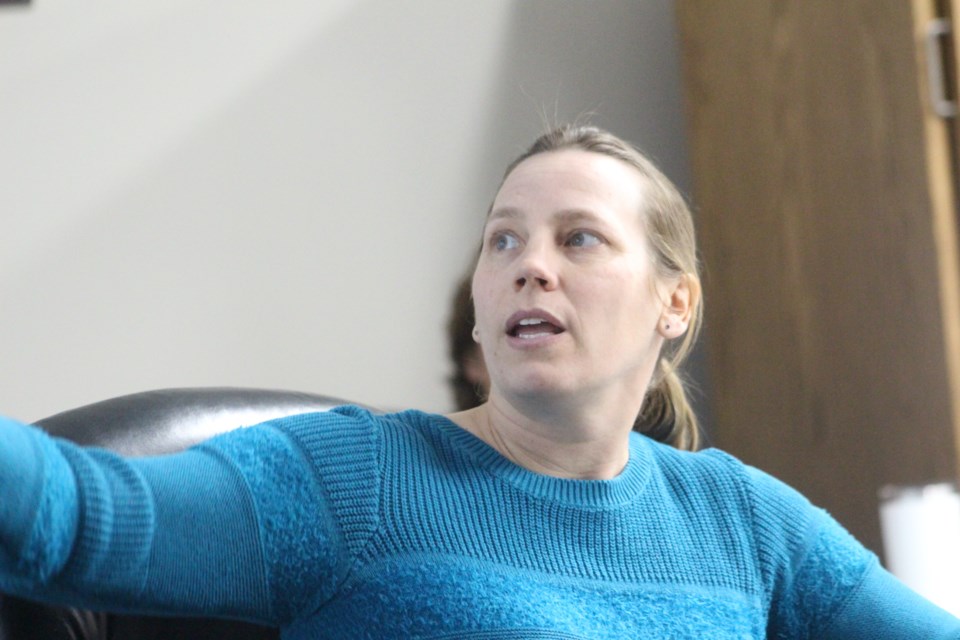BARRHEAD - The County of Barrhead has a $1.3 million surplus from 2023.
The question is, how do county councillors want to use it? That is the question councillors discussed during their Feb. 6 meeting.
In the end, councillors decided to set aside $851,000 towards a new capital reserve fund for future asset retirement and approve $684,000 for funding shortfalls in capital reserves for the new bylaw enforcement department, including purchasing a utility vehicle as well as renovations/replacement of the municipal office. Council also approved moving the funds from the newly created Gravel Pit Reclamation and Landfill Reclamation reserves from the above asset retirement funding into interest-bearing accounts, with the remaining funds going to unrestricted surplus. Councillors also instructed administration to the nearly $160,000 the Barrhead Fire Department received for participating in provincial wildfire deployment into the Fire Equipment Reserve.
Finance director Tamara Molzahn said in her biannual reserve transfer report that in 2023, the council authorized the transfer of $435,000 from the unrestricted surplus and tax stabilization reserve to balance the budget.
However, she said the transfer proved unnecessary due to department surpluses coupled with higher-than-expected investment income created the surplus.
"Investment income was $507,000 higher than budgeted, and we knew it would be, but during the budget deliberations, [council] decided to leave it at our historic totals and discuss what to do with the additional funds closer to year-end," Molzahn said.
Adding to the surplus was the reversal of the solid waste landfill and post-closure liability.
"This is an accounting or book entry and replaced by a new accounting [asset retirement obligations or ARO] standard," Molzahn explained, adding the later change netted the municipality about $365,000.
She noted that the surpluses across all departments amounted to roughly $847,000 and were offset by $436,000 in reserve transfers not made.
Molzahn reminded councillors that before councillors decide what to do with the surplus, the municipality has several 2024 budgetary obligations to meet.
The tax stabilization reserve currently sits at just over $1 million and the municipality has an unrestricted surplus of more than $1 million after $1.5 million of already allocated funds are accounted for.
She also noted that about $628,000 from a combination of those accounts is needed to meet county obligations in the 2024 interim budget.
What are AROs?
Molzahn said the creation of asset retirement obligations is more than just a change in accounting terms.
"It is much broader than the old solid waste landfill and post-closure liability that it replaces," she said. "They are legal obligations the county has for asset retirement. Things like decommissioning or dismantling a tangible capital asset or remediating contamination created by the normal use of an asset."
Some examples of AROs in the county include the Barrhead and District Regional Landfill, shared with the Town of Barrhead, potential asbestos abatement for county-owned buildings, and the reclamation of municipally-owned gravel pits.
Molzahn said that in 2020, the municipality had a hazardous assessment done on all its buildings, including the municipal office, public works building and the Ag barn.
"They found some asbestos, albeit very minor [in the municipal office]. Things like caulking used in the walls, the floor and ceiling tiles," she said, adding no asbestos was found in the public works or ag barn buildings.
Molzahn said that the municipality has been squirrelling away money for the eventual remediation and replacement of the municipal building; they do not have similar reserves for the landfill or its gravel pits, suggesting that council may want to create those reserves with funds from the surplus and then adding to them annually.
For the landfill, administration recommended setting aside $400,000 and $422,000 for the gravel pits, with the county contributing $13,000 and $15,000 annually starting in 2025.
"I am beginning to wonder if owning and operating your own gravel pits is as good a value as we once thought," Reeve Doug Drozd interjected. "Maybe buying gravel from a contractor and leaving the post-pit closure obligations to them is a better value. It is a factor we never had to consider before."
Deputy reeve Marvin Schatz said it is a risk either way, saying there is no guarantee that they could guarantee the amounts of gravel the municipality needs over the long-term, adding they should have been putting money aside for the eventual reclamation of their gravel pits.
"If we weren't obligated to put money aside, why would we?" Drozd countered.
County manager Debbie Oyarzun interjected, saying that although they may not have required the reserve, the municipality must follow through with its provincially-required reclamation plan, which will need funding to carry it out.



